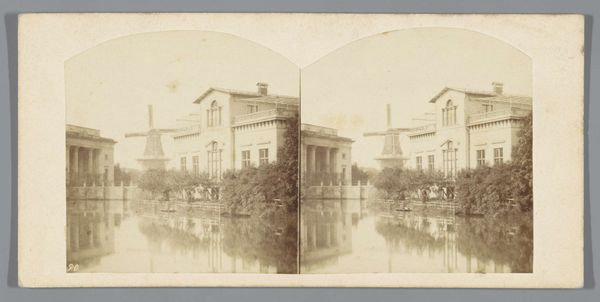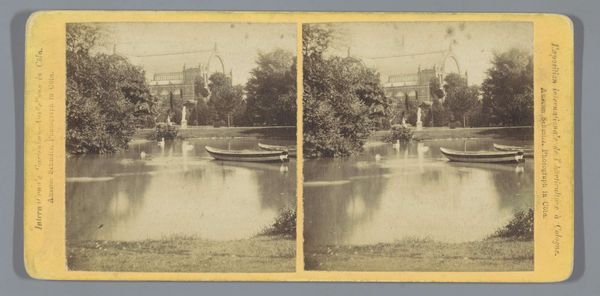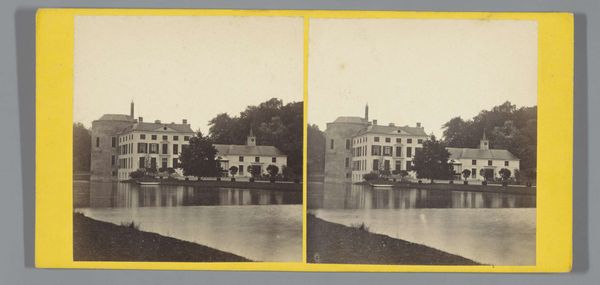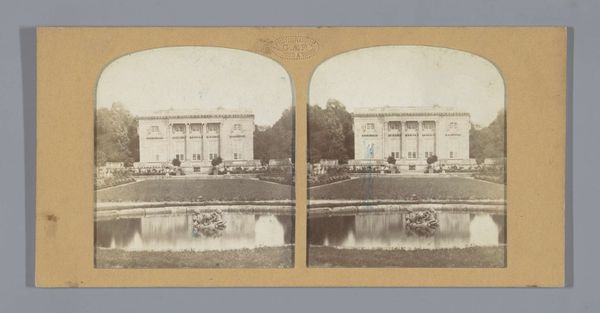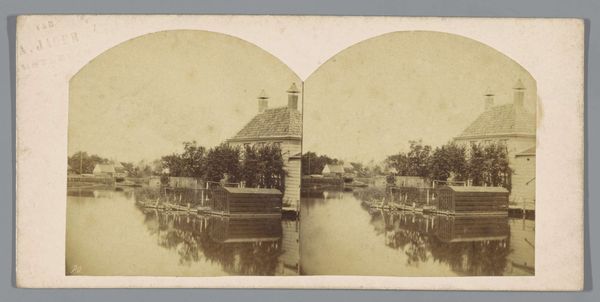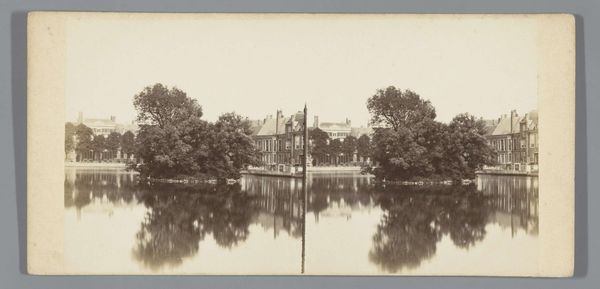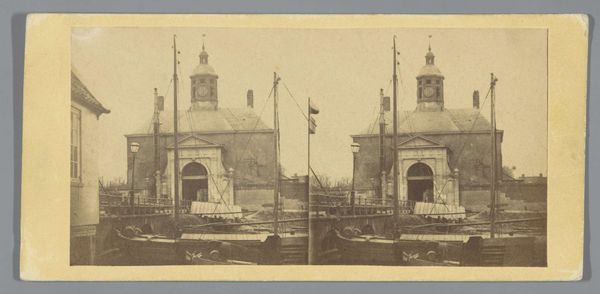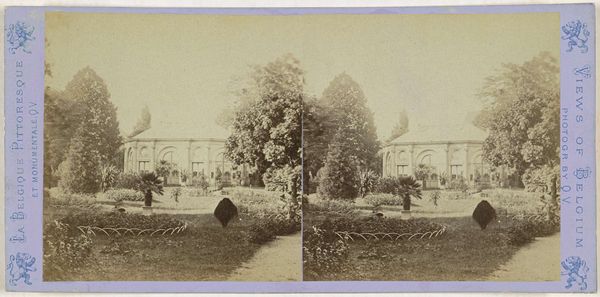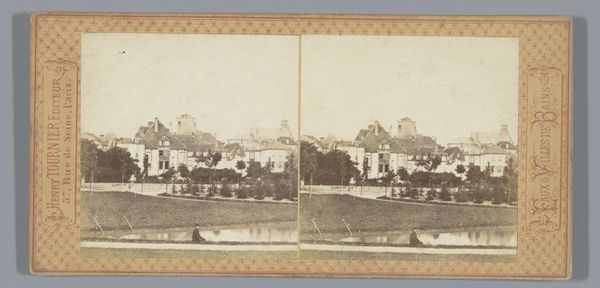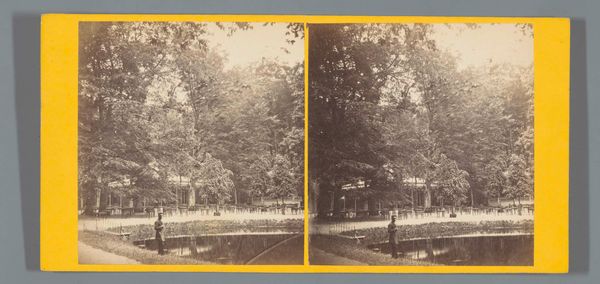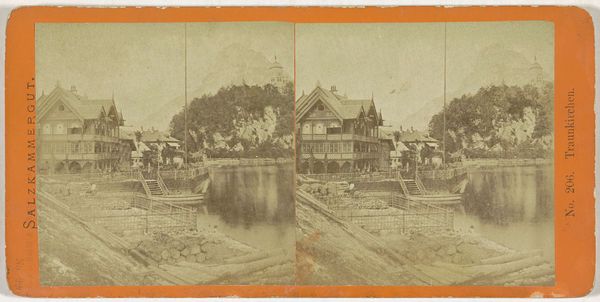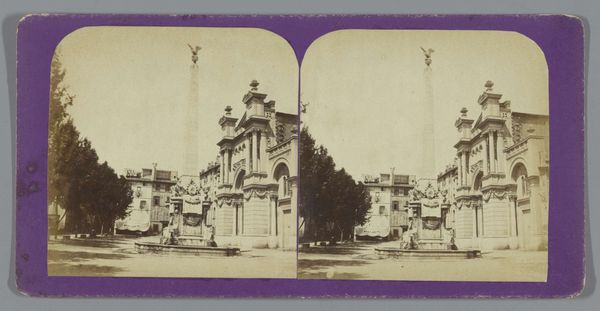
photography, gelatin-silver-print
#
dutch-golden-age
#
landscape
#
photography
#
gelatin-silver-print
#
cityscape
#
realism
Dimensions: height 82 mm, width 175 mm
Copyright: Rijks Museum: Open Domain
Curator: Looking at "Huizen aan water in Ouderkerk aan de Amstel" by Pieter Oosterhuis, created sometime between 1859 and 1870, the initial thing that strikes me is the almost unsettling stillness. It's quiet, wouldn’t you say? Editor: Yes, a pervasive calm, almost eerie. It reminds me of those Dutch Golden Age paintings where everything feels… too perfect? The scene itself – houses mirrored in the water – is peaceful enough, but there’s something about the tonality that adds a layer of melancholy. It almost anticipates climate change, and one sees it in this serene acceptance. Curator: It’s remarkable, really. The photograph is a gelatin silver print. Consider that technology capturing this sleepy, little waterside community just outside of Amsterdam. Oosterhuis perfectly composes water, architecture, and nature. Editor: Absolutely. And given the period, photography was still carving out its identity as an art form, right? So in presenting what looks like a pretty straightforward depiction of Dutch houses, he’s also implicitly commenting on realism and representation. Are we simply documenting, or interpreting reality? Curator: Precisely. Plus, I find this picture more than just a dry landscape because those houses seem occupied, full of everyday human dramas. You sense life happening just beyond the captured frame, giving the composition that wonderful layered reality. Editor: I agree. The reflections too are stunning. Water’s reflection bends light—fractures even rigid structures into a beautiful dance—reminding me of Derrida's theories on presence and absence. In the reflection, isn't the image simultaneously there and not there? It makes the water seem like this porous membrane connecting worlds seen and unseen. Curator: Exactly. The calm it takes to get such a symmetrical exposure… it speaks to something deep about place. Oosterhuis seems so connected, deeply, with Ouderkerk. What could these cityscapes reveal about community in that era? Editor: Right. These kinds of images played a vital role in constructing a national identity, I would argue. They fostered pride and documented Dutch achievements, but simultaneously whitewashed so many sociopolitical realities. In its tranquility, what realities might it mask, even unintentionally? What stories are left untold in this serene snapshot? Curator: Hmmm. You make me think. I feel newly complicated feelings now when gazing here, the still image rippling to deeper understandings of power structures embedded in landscape images! Editor: Ultimately, the magic of this image lies in its power to stir the waters within ourselves, making one think harder about both subject and self.
Comments
No comments
Be the first to comment and join the conversation on the ultimate creative platform.
